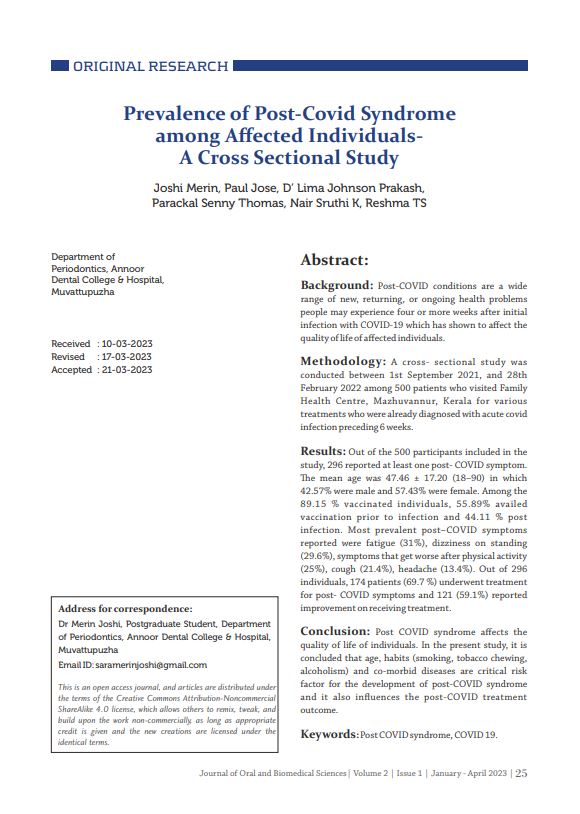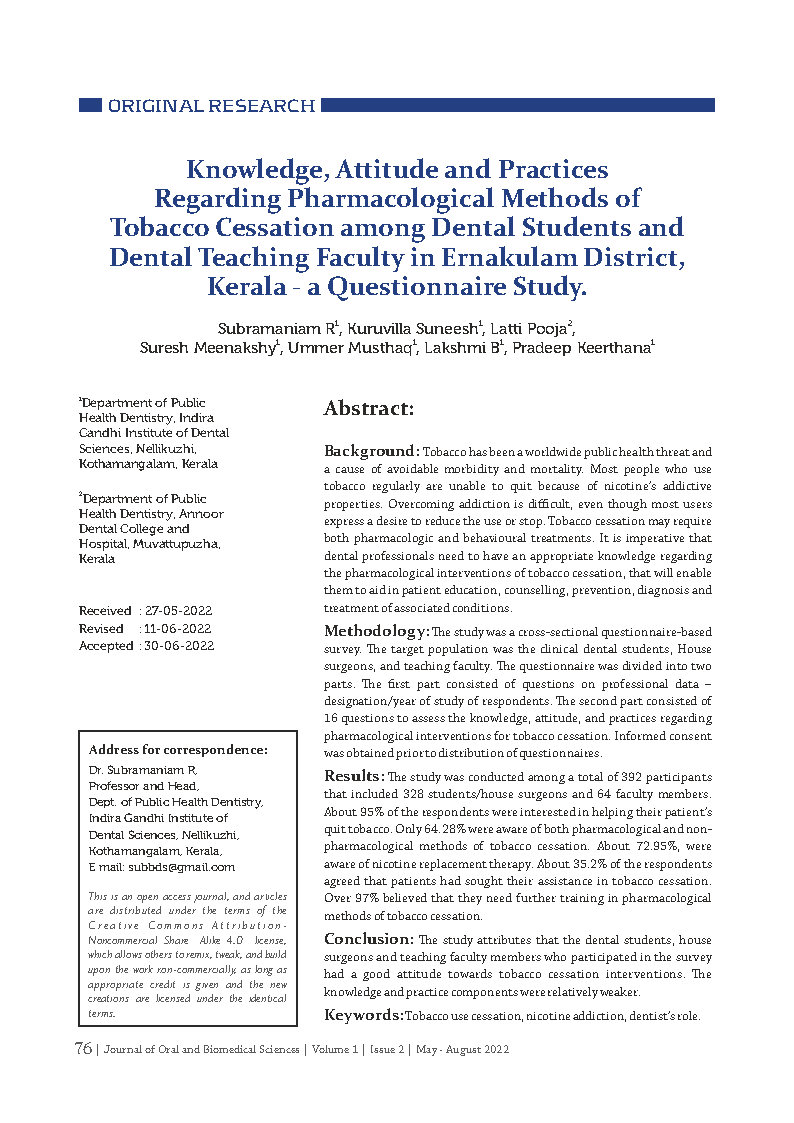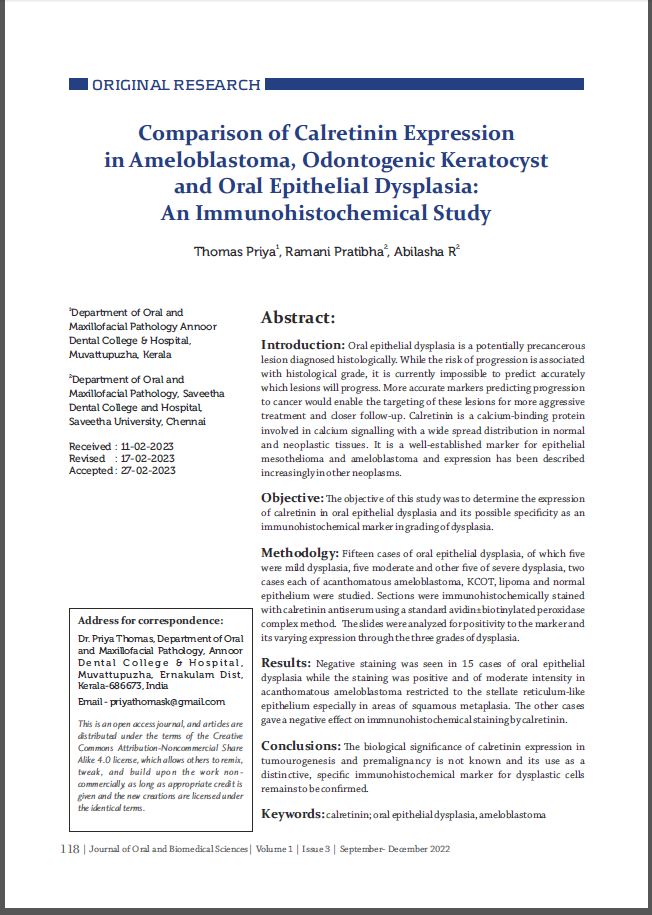Knowledge and Awareness of Use of Personal Protective Equipment among Dental Practitioners Before and During Covid-19 Pandemic
KNOWLEDGE AND AWARENESS OF USE OF PERSONAL PROTECTIVE EQUIPMENTS AMONG DENTAL PRACTITONERS BEFORE AND DURING COVID-19 PANDEMIC Santhosh Rahul K, Joy Aleesha, Mathew Josey, George Liza MDS, Paul Sinju, Yacob Jeason Paul Department of Dept. of Conservative dentistry & Endodontics, Annoor dental college & hospital, Muvattupuzha Running title – PPE knowledge before and after Covid 19 pandemic Received: 01-03-2023 Revised: 06-03-2023 Accepted: 08-03-2023 Address for correspondence: Dr. Aleesha Joy, Assistant professor, Dept. of Conservative dentistry & Endodontics, Annoor dental college & hospital, Muvattupuzha, Kerala E-mail: aleeshajoy.1991@gmail.com This is an open access journal, and articles are distributed under the terms of the Creative Commons Attribution-Noncommercial ShareAlike 4.0 license, which allows others to remix, tweak, and build upon the work non-commercially, as long as appropriate credit is given and the new creations are licensed under the identical terms How to cite this article: Santhosh R K, Joy A, Mathew J, George L, Paul S, Yacob J P. Knowledge and awareness of use of personal protective equipments among dental practitoners before and during covid-19 pandemic J Oral Biomed Sci 2023; 2: Abstract Introduction: The pandemic made the dentist to adjust to the new changes to deal with COVID-19 outbreak. With increasing awareness regarding emerging viral diseases dental practitioners have made positive changes regrading personal protection. Aim: To evaluate knowledge and awareness on use of personal protection equipment’s among dental practitioners before and during covid-19 pandemic. Methodology: Across-sectional study was conducted using an online survey. Dental practitioners from Kerala were selected for the survey. Questionnaire included questions about the difference they experienced by using personal protection equipment’s which they did not follow before the pandemic and are they finding it important and will they be continuing the practice after the pandemic. And the data obtained was analyzed statistically. Results: The result shows there is a massive increase in use of N95 mask during the pandemic 146 (59.6%) than before the pandemic where it was 12 (4.9%), as N95 masks were mandatory during the pandemic. Also, there is increases in usage of double gloves during the pandemic from 5 (2.0%) to 51 (20.8%). The usage of personal protective equipment before and during COVID-19 shows there is massive increases in the usage of PPE kit among the practitioners 146 (59.6%) from 11 (4.5%) before COVID. Conclusion: It was found that the majority of dental practitioners had adequate knowledge regarding the use of personal protective equipment and hygiene practices. Although the percentage of respondents with inadequate knowledge and practice requires attention and adequate measures should be taken to improve their awareness on use of PPE and hygiene practices. Keywords: Personal protection equipment, Covid-19, N-95 masks











